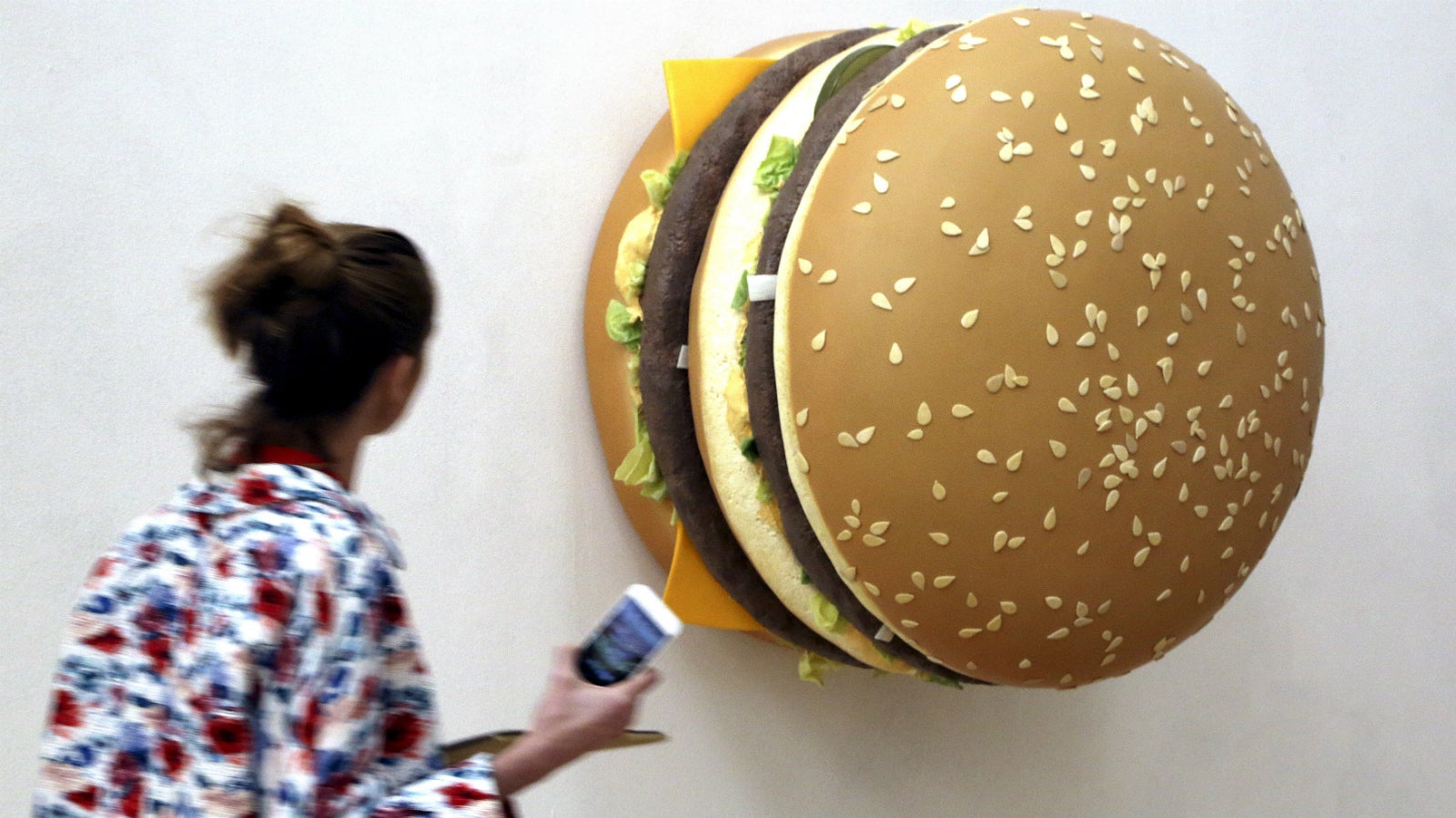Burgers, burgers everywhere. But are the eaters in sight?
“Burger King Brings Beef-Free Whoppers to India”—Oct. 2014


“Burger King Brings Beef-Free Whoppers to India”—Oct. 2014
“US burger chain Wendy’s to open first outlet in Gurgaon”—May 2015
The American Burger Bandwagon: Carl’s Jr Opening its first Outlet in India This August—July 2015
As these news headlines suggest, the Indian restaurant scene is getting spiced up.
Between August 2014 to August 2015, half-a-dozen top global food chains queued up to serve more burgers and pizzas in India’s $19-billion eating-out market.
Yet, Indians aren’t exactly smacking their lips. They simply are not eating as many burgers, pizzas, and tacos as these foreign fast-food companies would want them to.
“The food market has been stagnant for the last few years,” said Amit Jatia, managing director at Hardcastle Restaurant that operates over 220 McDonald’s restaurants in south and west India.
Despite the Indian eat-out sector growing at 15%, same-store sales growth (SSSG)—a metric used to measure sales at stores open for at least a year—at some of the top fast-food chains isn’t very high.
For instance, American fast-food chain YUM! Brands, which operates 800 restaurants between its KFC, Pizza Hut, and Taco Bell brands in India, registered its ninth consecutive quarter of negative SSSG in the last quarter of calender year 2015, due to “heightened competitive intensity in burgers,” said Abneesh Roy, associate director, institutional equities at Edelweiss Securities, in a research note dated Feb. 04, 2016.
Even the country’s largest pizza chain, Domino’s Pizza, has registered low SSSG over the past three years and has pumped up advertising expenses in 2015 to beat competition from non-pizza companies.
The company reported an improved SSSG of 3.2% for the year ending March 31, 2016, up from 0.05% in financial year 2015, on the back of “heightened promotions to compete with non-pizza players and food-tech players like Swiggy,” added Roy of Edelweiss.
Compared to 2012, when both Domino’s and McDonald’s posted SSSGs of 30% and 22% respectively, the current numbers are unimpressive.
There are three reasons for this slowing growth: first, consumers are really not eating out as much as it was projected they would a decade ago. Second, younger and urban consumers in India are spending on more sophisticated fare offered by restaurants and cafes in top metros. Third, health concerns are weaning people off fast-food.
According to a recent report by research agency Euromonitor, fast-food saw “a slowdown in transactions due to the rising health and wellness consciousness amongst consumers.”
Home cooking wins
Over the last decade, there hasn’t been any significant rise in the number of times Indian families ate out in a month, according to a recent report in the Mint newspaper that cited data from Indian Human Development Survey (IHDS) 2011-12.
According to the report, 27% of Indian households claimed to have eaten out at least once in the 30 days preceding the survey, said the report, adding that the numbers do not vary much from the 2004-05 survey.
It seems it is hard to get middle-income Indians, fed on home-cooked meals for decades, to step out and eat.
“Food has an immense cultural and social connotation in India. It’s the anchor of the family,” said Dheeraj Sinha, chief strategy officer, south Asia, at advertising agency Leo Burnett.
While those eating out are also trying out new things, the core staple meals remain traditional, Sinha said.
New recipe
On the other hand, urban Indians, with more disposable income than the previous generation, are choosing to spend their money on gourmet options.
While two decades ago, fast-food joints such as McDonald’s and Pizza Hut were considered premium, they now face stiff competition from stand-alone restaurants and cafes.
In the last three years, thanks to the mushrooming of eateries and rising popularity of cookery shows such as MasterChef, the food scene in India has changed dramatically.
Rarely heard of once, Mexican, Japanese, and Vietnamese cuisines today find spots at malls, high-streets, food-trucks, and food festivals. Younger and more sophisticated, Indians are now finding their grub at newer places.
And fast-food chains know they need to do more to whet appetites.
McDonald’s is opening more of its coffee-chain format McCafe and introducing products, such as the new Maharaja Mac, to woo customers. Last quarter, McDonald’s clocked 8.4% jump in SSSG, touching a 13-quarter high on the back of Maharaja Mac.
YUM! too is taking notes as customers trade up from fast-food. In the next few months, its Mexican fast-food brand Taco-Bell will upgrade into a hip casual-dining restaurant.
“The category has remained stagnant, and with competition increasing, every brand has to ensure it is relevant,” said Ankush Tuli, managing director at Taco Bell India, in an interview with Quartz.